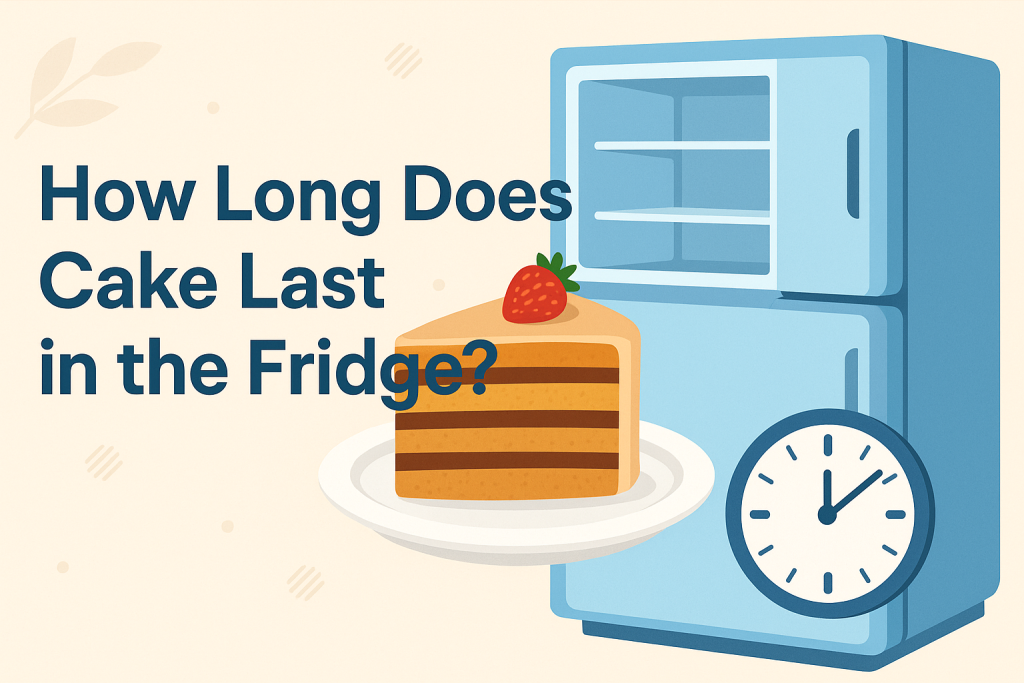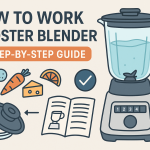Cake is a beloved dessert enjoyed at celebrations, gatherings, and sometimes just as a simple treat. But what happens when you have leftover cake? One of the most common questions home bakers and dessert lovers ask is, “How long does cake last in the fridge?”. In this guide, we’ll explore everything you need to know about refrigerating cake, how to maximize its shelf life, and how to keep your favorite slices fresh and delicious for as long as possible.
How Long Does Cake Last in the Fridge?
The length of time a cake remains fresh in the refrigerator depends on several factors, including the type of cake, ingredients, and how it is stored. Generally speaking:
- Homemade cakes with buttercream or ganache: 3 to 4 days
- Cakes with whipped cream, custard, or cream cheese frosting: 2 to 3 days
- Store-bought cakes: 5 to 7 days (often contain preservatives)
- Unfrosted cakes and cake layers: 4 to 5 days
- Cakes with fresh fruit or perishable fillings: 1 to 2 days
Always check for signs of spoilage before consuming any cake stored in the fridge.
Factors Affecting Cake Shelf Life in the Refrigerator
Not all cakes are created equally when it comes to longevity in the fridge. The following factors can affect how long your cake will last:
1. Type of Frosting or Filling
Cakes with dairy-based fillings or frostings, such as whipped cream, custard, or cream cheese, spoil faster than those with buttercream, chocolate ganache, or fondant. Fresh fruit toppings and fillings also reduce shelf life.
2. Ingredients Used
Homemade cakes without preservatives typically spoil faster than store-bought varieties. Cakes containing eggs, dairy, or fresh produce are more prone to spoilage.
3. Humidity and Temperature
Proper refrigeration is essential. Storing cake in a fridge above 40°F (4°C) may accelerate spoilage. High humidity can encourage mold growth, so keep your fridge dry and well-maintained.
4. Storage Method
Cake left uncovered dries out quickly and can absorb odors from other foods. Proper wrapping and airtight containers are crucial for maintaining freshness and flavor.
How to Properly Store Cake in the Fridge
Maximize the shelf life and quality of your cake by following these storage tips:
Step-by-Step Cake Refrigeration Guide
- Cool Completely: Let the cake cool to room temperature before refrigerating. Storing a warm cake can create condensation, leading to sogginess and mold.
- Wrap Tightly: Use plastic wrap or aluminum foil to wrap the cake or cake slices. Ensure no air can reach the cake to prevent drying out.
- Use Airtight Containers: Place the wrapped cake in an airtight container to add another layer of protection.
- Label and Date: If you have multiple cakes or desserts, label them with storage dates to keep track of freshness.
- Avoid Strong Odors: Store cakes away from pungent foods like onions or garlic, as cakes can absorb unwanted flavors.
Can You Refrigerate All Types of Cakes?
Most cakes can be safely refrigerated, but some types benefit more from refrigeration than others:
- Cakes with perishable frostings or fillings (e.g., cream cheese, mascarpone, fresh fruit) must be kept in the fridge.
- Sponge or pound cakes without perishable ingredients can be stored at room temperature if consumed within 1-2 days.
- Fondant or sugar paste-covered cakes may become sticky in the fridge, so store with caution.
- Angel food cakes or genoise may dry out more quickly in the fridge, so wrap very tightly or consider freezing if storing longer.
How to Tell if Cake Has Gone Bad
Before enjoying leftover cake from your fridge, check for these signs of spoilage:
- Mold: Any visible mold growth is a clear indicator the cake is no longer safe to eat.
- Off Smell: A sour or unpleasant odor means the cake has spoiled.
- Texture Changes: If the cake feels excessively dry, soggy, or slimy, discard it.
- Discoloration: Dark spots, or unusual color changes in the cake or frosting, signal spoilage.
When in doubt, it’s always safer to throw away cake that seems questionable.
Extending Cake Shelf Life: Freezing Cake
If you know you won’t eat your cake within a few days, freezing is a great option. Here’s how to do it:
- Wrap cake slices or whole cakes tightly in plastic wrap
- Place wrapped cake in a freezer-safe airtight container or bag
- Label with the date
- Freeze for up to 2-3 months for best quality
To thaw, move the cake from the freezer to the fridge overnight. Always check for signs of freezer burn or spoilage before consuming.
Frequently Asked Questions
How long does frosted cake last in the fridge?
Frosted cakes, especially those with buttercream or ganache, last about 3-4 days. Cakes with dairy-based or whipped toppings last about 2-3 days.
Should cake be covered in the fridge?
Yes! Always cover cake with plastic wrap, foil, or an airtight container to prevent it from drying out and absorbing fridge odors.
Can you eat cake after 7 days in the fridge?
It depends on the type of cake, but most cakes should not be consumed after 7 days due to risk of spoilage. Always check for signs of mold, off smells, or texture changes before eating.
Why does cake get hard in the fridge?
Refrigeration can cause cake to dry out and harden, especially if it is not properly wrapped. Allow the cake to come to room temperature before serving for the best texture.
Conclusion: Keep Your Cake Fresh and Delicious
Proper refrigeration and storage are key to extending the life of your favorite cakes. Most cakes last 2-7 days in the fridge, depending on their ingredients and how well they’re wrapped. When in doubt, check for any signs of spoilage. With these tips, you can enjoy your leftover cake safely and savor every last bite!


